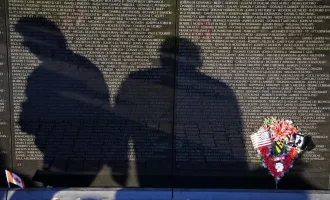
Go Vote on November 3rd!
In the first recent Democratic debate, Presidential candidate and Senator from Vermont reminded us that "Eighty percent of young people didn’t vote [in the last election]. We are bringing out huge turnouts, and creating excitement all over this country. Democrats at the White House on down will win, when there is excitement and a large voter turnout, and that is what this campaign is doing.”
In a liberal state like California, it’s essentially fact that California’s 55 electoral votes will go Democratic. This means your vote has a larger impact in state and local elections, where some issues remain contentious and voter turnout is low. If San Francisco’s voter demographics are anything like the rest of the country, young people in particular rarely make it to the polls, which means many of you probably aren’t voting or haven’t voted in the past.
In the past local San Francisco elections, voter turnout has hovered between 30-50% of registered voters in years in non-presidential election years. Those numbers mean that only about 150,000 to 200,000 people are deciding important issues for all of San Francisco’s over 800,000 residents. That’s only 20-25% of the population!
If you’ve been paying attention to the Democratic primary, you may know Senator Sanders is campaigning on “whether we can mobilize our people to take back our government from a handful of billionaires and create the vibrant democracy we know we can and should have.”
Similarly to the national stage, San Francisco has an opportunity to elect a new mayor, one not tied to corporate interests. Incumbent mayor Ed Lee has recently been suspected of bribery, and money laundering. Your alternatives are Amy Farah Weiss, Francisco Herrera and blogger Stuart Schuffman, also known as “Broke Ass Stuart.” They’ve formed a coalition and are working together in the hopes that San Francisco voters elect someone not tied to government corruption. While it’s dubious that a writer who self-described his mayoral campaign as “a journalistic experiment,” Herrera and Weiss both have strong activist track records.
Because of San Francisco’s ranked-choice voting system, voters can rank three candidates for mayor, and if no one candidate receives more than 50% of the vote, then voter’s 2nd and 3rd choice preferences are considered. This means that if you were to vote for anyone but Ed Lee, even if your first choice candidate didn’t make it, your #2 or #3 vote might count.
On this year’s ballot, in addition to a mayoral election, and number of elected positions, there are eleven ballot propositions, many of which will directly affect affordable housing supply, in terms of the city’s ability to build more affordable housing, where it can be built, and for whom.
Due to California’s uniquely participatory direct democratic process, anyone can propose a ballot initiative if they get enough signatures to support the initiative. That means you, your friends, your Lyft driver or even that one kinda smelly guy you run into on Muni could propose legislation.
Because ballot initiatives do require thousands signatures to make it on the ballot, 10% of the number of registered voters, usually proposed legislation only makes it to the polls if there’s a substantial amount of money or grassroots support behind it to send out people to pester those trying to enjoy a lazy Sunday in Dolores Park into putting their signature on a clipboard.
That, combined with the fact that people with the strongest opinions and loudest voices tend to be the ones that make it to the polls means that over the years some ill-advised initiatives have become the law of the land. Remember when California voted to un-legalize same-sex marriages in the 2008 election? That was because of a state ballot initiative, which goes through a similar approval process as local ballot initiatives.
Similarly, last year in the June 2014 election, San Francisco voters decided that any construction projects along the waterfront required voter approval if they exceeded the current height restrictions. Proponents of the legislation argued that it prevented hotels and luxury condos from blocking views of the waterfront, while opponents argued that further impediments to well-planned and reasonable housing developments will only exacerbate the housing shortage.
The passage of this 2014 ballot initiative led directly to Proposition D on this year’s development, which is a housing development in Mission Rock. This is because the tricky thing about ballot initiatives is that they can only be amended by another ballot initiative, so if San Francisco later determine a law had unintended consequences, the city supervisors can’t revise the law - it must go through yet another ballot initiative.
The June 2014 election had abysmally low voter turnout - only 129,399, voted, which meant that the margin of votes in this election was only around 20,000 people. To put that in perspective, that’s around the total number of people UCSF employs. If everyone that worked at UCSF converged upon a single issue and voted en masse, we could potentially change the outcome of an election, particularly with issues that are hotly contested.
This year’s November 3rd election includes five propositions that could directly or indirectly affect affordable housing. Your votes are critical in determining how the course of San Francisco’s future progresses. In particular, Proposition A, an affordable housing bond, requires ⅔ majority to pass. Other contentious ballot measures include the so-called “AirBnB Proposition” to further regulate short term rentals, and a proposition to halt all development in the Mission that is not 100% affordable housing.
Later this week, Synapse will discuss the pros and cons of each housing-related ballot measure in more detail, but in the meantime, you can educate yourself on the issues.



